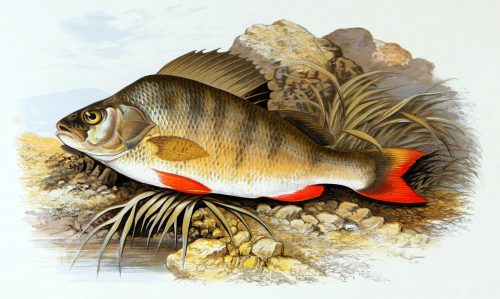As the adage goes: you are what you eat. But could we possibly learn more about something from what they use to eat, rather than simply what they eat? Led by Elizabeth Sibert, a post-doctoral fellow at Harvard, a research team that included Pincelli Hull, Assistant Professor of Geology and Geophysics at Yale, recently showed that we can indeed learn from the tools of eating. Through examination of microfossil fish teeth preserved in sediments buried deep in the South Pacific Ocean, the team discovered evidence of rapid evolution in ray-finned fish in two phases after the Cretaceous-Paleogene extinction, better known as the mass extinction that wiped out the dinosaurs 66 million years ago.
Teeth morphology- shape, size, and geometry- gives insight into the eating habits of the fish. A change in tooth structure represents a change in the makeup of a fish community. Usually, microfossil fish teeth are overlooked by scientists because of their limited amount and small size. However, they actually serve as important tools to trace evolutionary change.
The team isolated fish tooth microfossils from the sediments. To better identify the different morphotypes, or different phenotype within a species, and distinguish between them, the team developed a new system for classifying teeth to quantify the morphological variation. They identified 136 unique tooth shapes, each defined with a unique combination of characteristics. However, because of the low availability of teeth for sampling, limited morphological work could be done. Evolutionary rates were calculated with capture-mark-recapture methods, which are commonly used in ecology to estimate an animal’s population size. Differences between the fossils in a data set were calculated to limit the possibility of differentiating between teeth that actually fell into the same morphological category. Dr. Sibert and colleagues explored the diversity of open-ocean fish across the Cretaceous-Paleogene extinction and Palaeogene climate events into the middle Eocene through observation of fish teeth found in deep sea sediments. The origination and extinction of each tooth morphotype gave the team insight into ecological diversity throughout the time period following the Cretaceous-Paleogene mass extinction.
Although the Cretaceous-Paleogene extinction had minimal effect on fish population in terms of extinction, it wiped out the dominant groups of the species, allowing for rapid evolution that led to increased diversity. After the extinction, no morphotype appeared consistently at a higher abundance than others. No morphotypes disappeared in the Cretaceous period right before the mass extinction, so environmental events prior to the Cretaceous-Paleogene extinction did not play a role in the changes in fish diversity that followed the mass extinction.
The first phase of rapid evolution happened approximately 64 million years ago. The appearance of short-lived teeth as well as teeth that contributed to long-term diversity occurred with this phase. The second phase, which occurred 58 million years ago, produced rapid evolution in a geographical region different from the first, contributing to increased diversity in fish. Although more diversity occurred with these events, the fish population did not necessarily increase. After the Cretaceous-Paleogene extinction, ray-finned fish became ecologically dominant compared to other marine groups.
The two phases, although close in time on a geologic time scale, are, in fact, distinct. Both time periods produced some short-lived species, but the first phase saw an increase in extremely large teeth in the Pacific Ocean. The differences in patterns and types of diversification suggest that they resulted from differing ecological and climatic conditions.
According to Hull, the results of this study can give insight into the ecological effects of not only extinction, but change in makeup of a species.
“She [Sibert] showed that although there was no mass extinction you just lose two dominant groups, and that’s enough to allow two pulses of restructuring,” said Hull, highlighting the fragility of ecosystems. “In the world’s oceans today, there haven’t been very many extinctions. We’re losing vast expanses of coral reefs. We’ve lost the dominance of a lot of large sharks or whales. But they’re not extinct.”
More subtle changes can actually have a great impact on ecological diversity. “You don’t actually have to cause a lot of things to go extinct to change in the world,” said Hull. Even small ecological changes have importance, and although we do give some attention to extinctions and endangered animals, we should recognize that species are interconnected. Our world is interconnected. To protect our ecosystems is to protect our future, as even seemingly trivial changes can cause drastic results.

